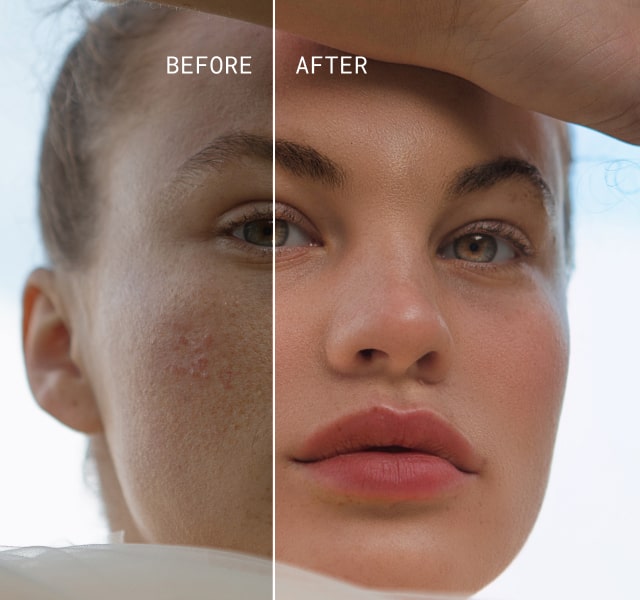屋外ポートレート撮影を簡単に:完璧なショットを撮る方法
March 02, 2025
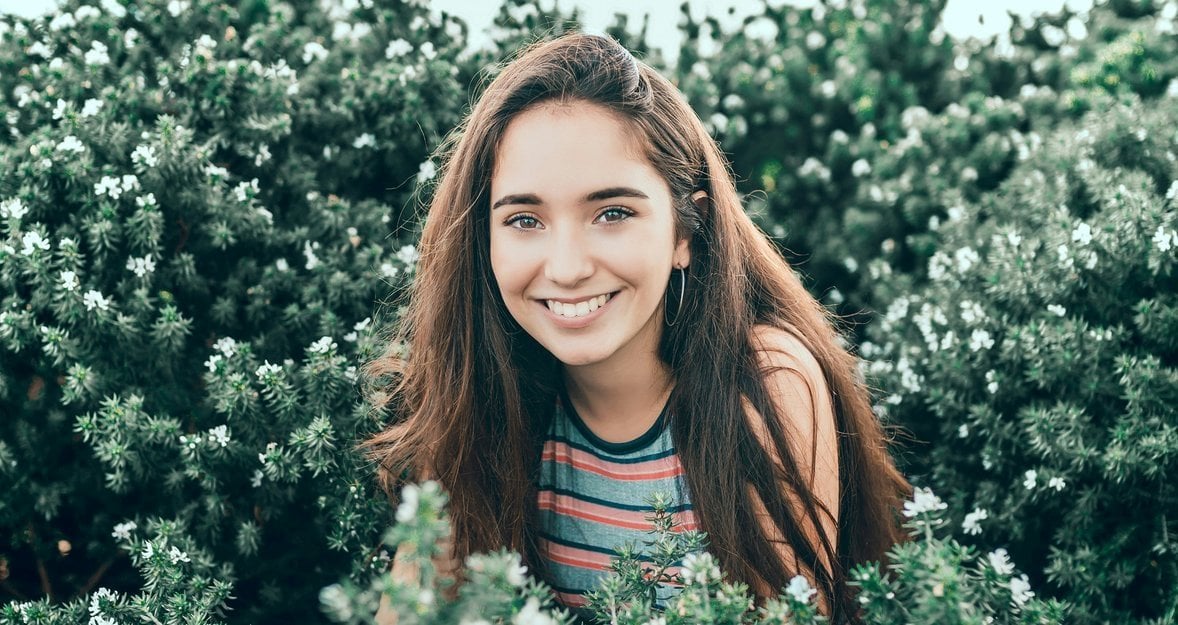
大自然は、屋外ポートレートに最適な様々なロケーションを提供してくれる。
それぞれのロケーションは、あなたのイメージに独自のクオリティをもたらし、利点と課題をもたらします。モデルを連れて撮影場所に行き、その場で撮影ポイントを選ぶのと、到着する前にすべてを徹底的に計画するのとでは、大きな違いがある。場所や時間帯、天候、衣装、フォトメーキャップ、ポーズ、スタイルなど、すべてを考慮する必要がある。
このガイドでは、撮影を成功させるために、撮影に出かける前に考慮すべきことをチェックリストにしてご紹介します。さあ、始めましょう。
スムーズな撮影のためのクイック準備チェックリスト
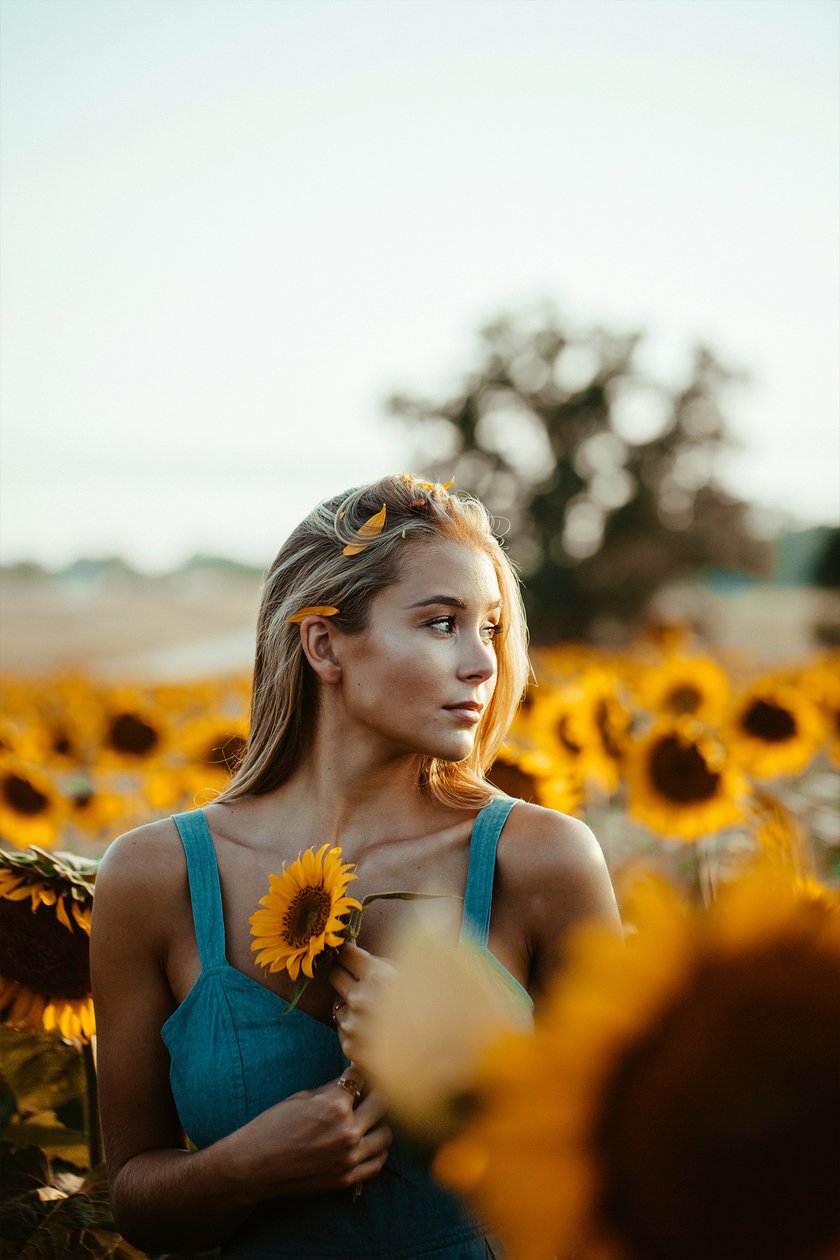
撮影を成功させるために、モデルと一緒に進められる準備チェックリストを作成しました。
1. ロケーションと撮影スポットの下見
撮影に適したエリアを見つけたとしても、具体的にどのスポットで撮影するか、そして移動ルートを決めていますか?ポートレート撮影において、モデルのコンディションを保ち、疲れさせないことが非常に重要です。無計画に歩き回ると、モデルは撮影が終わる前に疲れてしまい、表情やポーズにも影響を及ぼします。休憩できるポイントを事前にルートに組み込んでおくと、モデルだけでなく撮影する側もリフレッシュでき、最後まで高いパフォーマンスを維持できます。
創造力を解き放とう – プランを選んで編集開始
プランを見る2. スタイルとテーマを決める
ロケーションが決まったら、撮影スポットに合ったスタイルを構築しましょう。明るく楽しい雰囲気、ダークでムーディーなトーン、またはシックな美学を取り入れるなど、ロケーションの雰囲気に沿ったスタイルを作り上げることが大切です。
詳しくはこちら: 屋外ポートレート写真のための基本設定
3. 最適な時間帯を計画する
撮影時間は写真の仕上がりに大きく影響します。選んだスタイルに合った時間帯を選ぶことが重要です。たとえば、明るく幸せな雰囲気を求めるなら、午後の時間帯が最適です。太陽の光が十分にあり、正午のように平坦な光になりにくいからです。ゴールデンアワー(朝日や夕日の時間帯)は、柔らかく温かみのある光でモデルを引き立てるため、理想的な撮影時間のひとつです。また、トワイライト(薄明りの時間帯)を使うと、ムーディーな雰囲気のショットが撮れます。ただし、短時間で光が変わるため、事前にしっかりと準備を整えておきましょう。
4. 天気予報をチェックする
天候は撮影の成功を左右する重要な要素です。撮影スタイルに合わない天候になった場合、日程を変更するのも一つの手です。晴天、曇天、雨天など、それぞれの天候には独自の雰囲気や象徴的な意味があり、撮影のテーマを引き立てることもあれば、逆に妨げることもあります。
5. 衣装・ヘアメイクのコーディネート
モデルの衣装は、撮影の雰囲気や最終的な仕上がりに大きな影響を与えます。撮影のテーマに合ったスタイルかどうかを慎重に検討しましょう。
また、衣装の色がロケーションと調和しているかも重要なポイントです。色の理論を活用し、モデルの衣装が背景に埋もれることなく適度に際立つように配慮しましょう。背景よりも衣装が視覚的に主役となるような色のバランスを考えることが重要です。
さらに、ヘアメイクも衣装や撮影テーマに合ったものにする必要があります。プロのヘアメイクアーティストと連携すると、モデルを最高の状態に保つことができ、撮影の質も向上します。
6. ポージングを決めて練習する
ボディランゲージやポーズは、撮影テーマを伝えるうえで大きな役割を果たします。撮影前にムードボード(インスピレーションとなる写真のコレクション)を作成し、モデルと共有しておくとスムーズに進められます。
撮影前にモデルとしっかりコミュニケーションをとり、どのようなイメージを目指しているのかを明確に伝えましょう。ポーズ、衣装、撮影のテーマが分かる資料を準備し、ロケーションのイメージ写真も併せて共有すると、撮影の方向性がより明確になります。
トップアドバイス: 撮影中にモデルが写真をチェックできるようにすると、自分のポージングを確認でき、撮影の進行状況について意見を交換する良い機会になります。撮影者とモデルが協力し合うことで、より良い作品を生み出せるでしょう。
創造力を解き放とう – プランを選んで編集開始
プランを見るライティングテクニックをマスターしよう
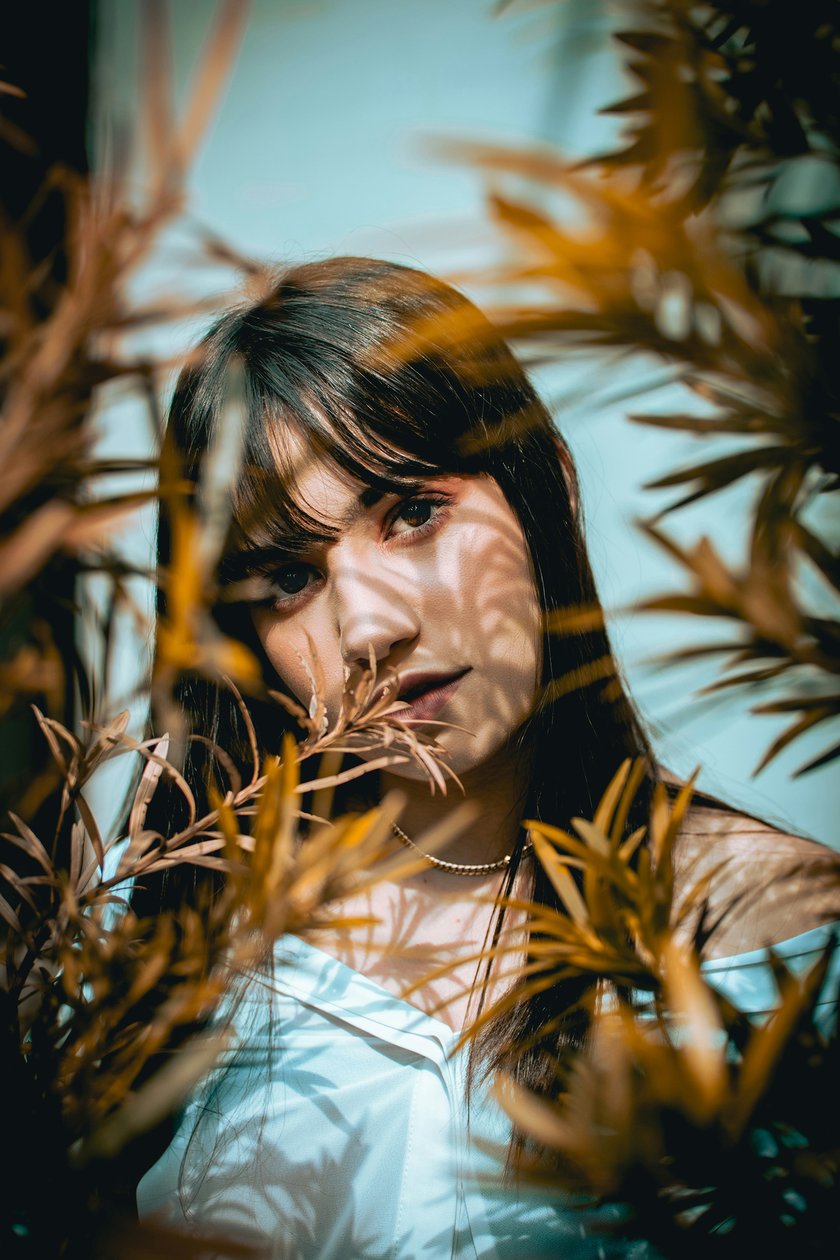
屋外での撮影では、スタジオのように完璧に照明をコントロールすることはできませんが、光の使い方次第で写真の仕上がりを大きく変えることができます。ここでは、屋外撮影で利用できる光を最大限に活かす方法を紹介します。
自然光を活用する
屋外では、太陽や天候に左右されるため、その特性を理解し、適切に対応することが重要です。晴天時の光の特徴 青空の下、太陽はまるでスタジオの裸電球のように強いコントラストを生み出します。その結果、濃い影ができやすく、顔の一部が暗くなってしまうことも。曇天時の光の特徴 雲が太陽を覆うことで、空全体が巨大なソフトボックスのような役割を果たします。その結果、影が柔らかくなり、肌のトーンが均一になりやすいため、モデルをより美しく引き立てることができます。
では、こうした環境でどのように撮影すればよいのでしょうか?スタジオ撮影を経験したことがあるなら、レンブラント・ライティングやバタフライ・ライティングといったポートレート照明技術を知っているかもしれません。これらは、モデルと太陽の位置関係を工夫することで屋外でも再現できます。さらに、時間帯や撮影場所によっては、サイドライティングや逆光を活かした撮影も効果的です。
トップアドバイス: 顔の影が気になる場合はレフ板を活用すると、影を和らげて均一な光を確保できます。逆に、光を遮ってドラマティックな雰囲気を作りたい場合はフラッグを使用すると良いでしょう。
屋外で人工光を活用する方法
屋外で人工光を活用する方法 屋外撮影では、ポータブルな人工光源を使用することも選択肢のひとつです。持ち運び可能なフラッシュや定常光ライトを使えば、必要に応じて光を補い、さらにはユニークな演出を加えることもできます。特に、RGB対応のライトを使用すれば、モデルや背景にカラーアクセントを加えることも可能です。
トップアドバイス: 日が傾き、**トワイライト(薄明りの時間帯)**になると、ポータブルライトが大活躍します。自然光が減少するこの時間帯では、ISOを上げすぎるとノイズが発生しやすくなるため、補助光を使うことでシャープでクリアな写真を撮ることができます。
スタジオライティングのテクニックを屋外に応用する スタジオでは照明を自由にコントロールできますが、屋外でも基本的なライティングの原則を応用することで、より洗練された写真を撮影できます。人工光を活用すれば、影を埋める、シルエットを際立たせる、またはノイズを抑えるといった調整が可能です。創造力を発揮し、光を巧みにコントロールすることで、ワンランク上の屋外ポートレートを実現しましょう!
ポージングと構図:屋外ポートレートを格上げする5つのポイント
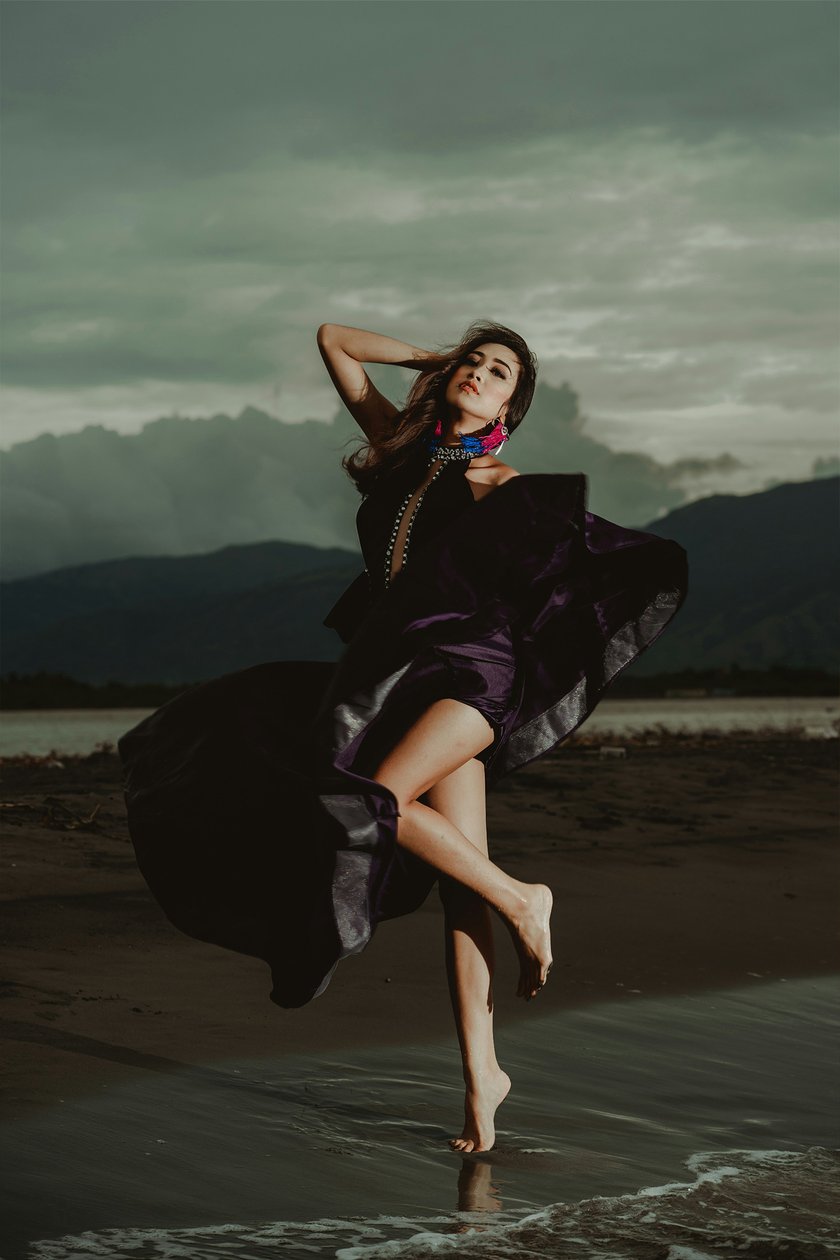
素晴らしいポーズと構図を活用して、屋外ポートレートのクオリティをさらに向上させましょう。撮影前にしっかり計画を立てることも大切ですが、現場でひらめいたアイデアにも柔軟に対応し、創造力を発揮することが成功の鍵です。
1. シーンに合わせて動きのあるポーズか静的なポーズを選ぶ
ポーズには、大きく分けて「静的(スタティック)」と「動的(ダイナミック)」の2種類があります。どちらも魅力的な表現が可能ですが、屋外撮影の広々とした空間を活かすなら、動きのあるポーズが特に映えます。 モデルが歩く・ジャンプする・走る・回る・ダンスするといった動きのあるポーズは、屋外ならではのダイナミックなエネルギーを生み出し、写真に躍動感を与えます。
2. 環境を活かしてユニークなポーズを生み出す
屋外撮影の魅力のひとつは、ロケーションに応じたポーズのバリエーションを生み出せることです。例えば、低い壁や岩、倒木、階段などを活用し、モデルに座らせたり、もたれかかったりすることで、よりリラックスした自然な雰囲気のポーズを作り出せます。また、森や公園なら、木にもたれたり、枝を手に取ったりするなど、環境を活かしたポーズを取り入れると、写真にストーリー性を加えることができます。
3. 自然の要素を活かして構図を強化する
屋外撮影では、周囲の自然の要素をうまく取り入れることで、構図をさらに引き立てることができます。リーディングライン(導線)を活用道路、川、フェンス、橋など、視線を自然にモデルへと誘導する線を活用しましょう。
三分割法を意識モデルを画面の中央ではなく、画面を三等分するライン上に配置すると、視覚的にバランスの取れた魅力的な構図になります。フレーミングを活用枝の隙間、建物のアーチ、岩やフェンスの間などを利用して、モデルをフレームの中に収めると、視線を自然に誘導し、より芸術的な仕上がりになります。
4. 環境の小道具を取り入れて写真にアクセントを加える
ロケーションにある要素をうまく使い、小道具として活用すると、写真に奥行きや独自性を加えることができます。自然の中なら、花や葉を持たせることで、写真にナチュラルな雰囲気を演出。雨の日なら、水たまりのリフレクションを利用し、幻想的な雰囲気を作り出す。都市部での撮影なら、ガラス窓の反射を利用し、ユニークなシンメトリーやミラー効果を演出する。屋外には多くの撮影のチャンスが隠されているので、環境を最大限に活かして、オリジナリティのある作品を作りましょう!
5. モデルを主役にすることを忘れない
どんなに素晴らしいロケーションで撮影しても、モデルが背景に埋もれてしまってはポートレートとしての魅力が半減してしまいます。モデルをフレームの主役にする。モデルが適切な比率でフレーム内に収まるようにし、視線がまずモデルに向かうような構図を意識しましょう。背景と色のコントラストを意識する。背景と衣装の色が似すぎていると、モデルが際立ちません。明暗のコントラストや補色を利用し、モデルがしっかり目立つように工夫しましょう。モデルが小さく見える構図を使う場合は配置に注意。背景の壮大さを活かした写真を撮る場合でも、視線が自然にモデルへと向かう位置に配置し、背景に埋もれないように工夫することが重要です。
まとめ

屋外でのポートレート撮影は、ダイナミックな要素を取り入れることで、スタジオ撮影とはまた違った魅力を引き出せる楽しい撮影スタイルです。照明の完全なコントロールは難しいですが、スタジオライティングの原則を応用することで、自然光や人工光を活かした撮影が可能になります。特に夕方以降の撮影では、ノイズを抑えたクリアな仕上がりを目指すためにポータブルライトを活用するのも有効な手段です。
また、屋外には撮影をより魅力的にする要素がたくさんあります。ロケーションの特徴を活かし、フレーミングやリーディングラインを上手に使うことで、視線を自然にモデルへ導くことができます。 ただし、背景がモデルよりも目立ちすぎないように注意しましょう。モデルがフレーム内で適切な割合を占め、背景に対して適切な色のコントラストを持つことで、写真の主役としてしっかりと引き立ちます。背景と衣装の色がぶつかり合うような組み合わせは避け、モデルが映えるスタイルを意識しましょう。
事前の計画とモデルとの密なコミュニケーションを通じて、ユニークなテーマ、ロケーション、スタイルを活かした楽しい撮影を実現できます。さあ、屋外に出て、創造力を存分に発揮しましょう!
